

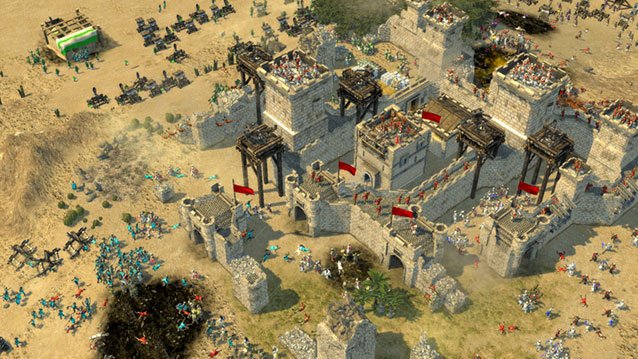
Stronghold Crusader 2 is the sequel to the highly acclaimed Stronghold Crusader which was released in 2002 by firefly studios. Players find themselves returning to the deserts and oases that pepper modern day Israel in order to fight the forces of Saladin and his followers during the Third Crusade.
SC2 is a real-time strategy game, or RTS, which requires the player to juggle numerous elements around them in order to build a powerful economy. As a lord you are tasked with maintaining a population and keeping them content, if the happiness of your fiefdom drops below a certain level so does the population, and with it your labor force and army supply. This economic micro-management needs to all happen while also mounting defenses against a constant assault by the AI which is almost immediate, and while warding yourself against lightning storms and locust swarms which have a tendency of making your villagers unhappy and setting your buildings on fire.
Economic micromanagement is not as simple as dropping a chain of buildings and hoping for the best, it is one of the most challenging aspects of the game. Resources can only be gathered from designated points and all resources that your units gather must inevitably be turned into your stockpile, the problem with the stockpile is that oftentimes you can only have one. Resources such as hops, wheat, and flour need to be dropped off or picked up by peasants. These processes take time and the amount of time they take is dependent on the distance of resource producing and resource consuming buildings from the stockpile. In order to make bread a peasant needs to take wheat from the farm to the stockhouse, a miller is then responsible for picking up the wheat and converting it into flour which is once again returned to the stockhouse, the flour is then picked up by a baker and turned into bread and finally turned into a granary. In order to optimize the production of bread there needs to be a minimal supply line in the entire process. Since resources can only be gathered from designated points which are often very distant from one another, the player is forced to make decisions about what resources should be prioritized and what resources should be ignored. In order to maximize food production your storehouse must be near an oasis, if you want to maximize wood production you need to be near a forest, resources such as stone and iron must also be juggled in these economies where travel time is a crucial factor.
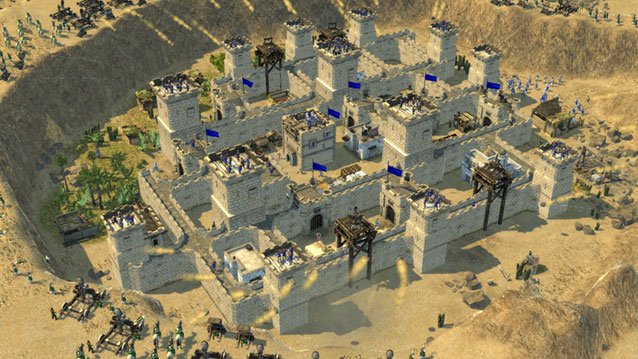
While building your economy you will be constantly under attack by the game’s AI and the establishment of defenses is a must. Combat has numerous unique qualities that the player can experiment with. For units such as archers, terrain advantage reigns supreme, and placing them within the fortifications of your newly built castle will give them the ability to rain down hell on your enemies before they can even touch you. Siege weapons and slaves can set fires to enemy buildings which spread over time. Trebuchets can lob diseased animal parts over the walls of your enemies to make their enemy units and villagers sick. The destruction of a wall does not happen immediately when it is attacked by catapults, a wayward shot can deteriorate the front of your castle walls, or it can blow up your battlements killing every archer that stood upon them. The player can set up numerous traps and pitfalls to deter a direct assault upon the castle walls, and there are a variety of units with unique abilities which have a distinct impact on the battles fought. It is clear that the developers attempted to instill a sense of realism into the game, catapults can miss their targets, and line of sight is an important factor for ranged units, imperfect line of sight causes arrows and projectiles to bounce off of hills and walls, while no line of sight forces crucial units to reposition.
SC2 offers numerous modes of play including a short learning campaign, a much broader skirmish campaign, and online play with up to 8 players. While the learning campaign has some minor development of story, narrative within the skirmish campaign is virtually non-existent. The skirmish campaign puts the player into many challenging positions against the AI. Often you are outnumbered, or lacking critical resources to build up an army. Some maps have limited food sources, other maps have no iron sources at all, and one particular nasty campaign has you fighting two other lords in an uphill battle in a game where terrain advantage is everything. While the unique scenarios were delightful to crack, sometimes it feels like the development team got lazy and decided to just throw more and more AI opponents at me, this feels particularly true for the final skirmish which leaves you alone with a small plot of land to fend off every other AI opponent in the game.
The decision to swarm the player with enemy AI as the game progresses is probably because the game’s AI is not intelligent alone. The AI has a tendency to follow similar pathing constantly when attacking a player. I have built walls in front of the AI’s path with gaps on the ends which it can easily go through and it still chooses to charge straight into my battlements. In the instances when it tries to avoid towers or flank the player, it can easily be aggroed and kited to the towers with a small volley of arrows. I have diverted hundreds of slaves which once intended to burn my unsuspecting farms to the ground using this method. The ability to aggro the enemy this easy would be game breaking in the campaign if not for the sheer volume of units and the disadvantages that must be faced in each successive skirmish mission. While the volume of units sent in is often high, units often attack one by one. It is not uncommon to see spearmen charging toward your castle walls while the catapults supporting them are still crawling at a snail's speed halfway across the map. It is disappointing to see that the AI cannot co-ordinate its own units, much less co-ordinate with other, allied, AI.
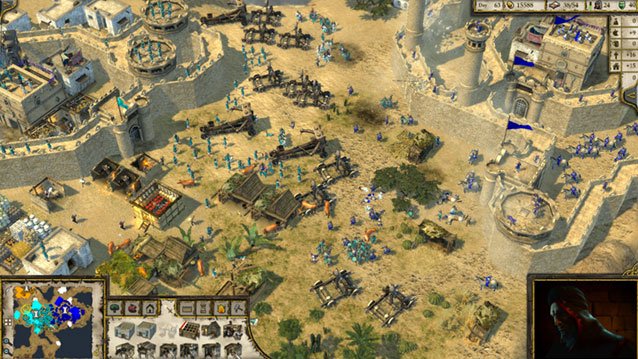
While combat in SC2 is fun to play with, the UI within the game is severely lacking. Building health is hard to see, and sometimes units and buildings can be difficult to individually select. In order to see the number of resources that you have you need to access the granary or the stockpile. This might be fine for more minor resources, but important factors such as wood, iron, stone, and total gold should probably be consistently visible. Peasant pathing and labor is automated, and often this becomes a problem when under attack as large portions of your population will just walk into an army of archers only to be cut down, severely hampering your economy. Issuing attack orders and micro-managing units in your army is difficult; often when attempting to disengage parts of your army will continue fighting and soldiers will often automatically engage enemies while they’re pathing to a location. Targeting specific locations in a fortress with catapults and trebuchets sometimes takes multiple attempts to get right. Overall the UI is pretty clumsy and antiquated. It feels like the game expects you to just build a mass of units instead of skillfully managing them to victory. One very bothersome UI omission was a demonstration of building efficiency; while a mill might show total flour produced in its lifetime there is no indication of the rate of flour production. While this does not exist for specific resources you can measure the amount of general resources accrued for important functions. This means that you can see how much food is produced and consumed daily but have no idea what the rate of bread or apple production is. This makes optimization of production chains difficult. A positive addition to the UI which I found enjoyable was the ability to speed up the game. While it was useful during the earlier and more tedious parts of SC2, as the difficulty of the skirmishes increased I found that I had little need for it.
The game has minor bugs here and there but nothing extremely game breaking. Sometimes neutral npcs will stack and refrain from defending themselves when attacked. Units have a tendency freeze up when in battlements and ignore move orders; this factor was admittedly frustrating when attempting order my archers to abandon the walls as they were blocked in by a single swordsman. When placing buildings, it is possible to trap a unit inside of your building rendering it immobile, this can take out a large portion of your army faster than a catapult blowing a hole in your battlements. I feel these bugs will be probably patched, firefly studios has announced that it will watch closely for any problems post-release.
The visuals are clearly an immense improvement from the 2002 counterpart, however they aren’t jaw-dropping. Units lack any form of ragdoll physics when blown off battlements, and buildings look identical to one another. Buildings are also fairly static when not attacked; while the flag on top of the fort you control might wave in the wind, clothes hung off the hovels in your town, and tents that produce units remain totally still. All of the dynamic presence and change in buildings is shown when they’re being burnt down or destroyed.While these are factors that we might expect in modern RTS or city builders they are not present here.
The problem with Stronghold Crusader 2 is that it while the game has nuance in both the city builder and combat aspects it doesn’t excel in any specific field. Combat has many unique factors behind it, but the interface is clunky and micro-management is difficult. Many committed rts players have expectations of better unit control and UI. Individuals interested in a city builder will probably not find the depth that they’re looking for. While it is very difficult to build an efficient economy ingame, there isn’t much depth behind the choice of buildings. The core formula for Stronghold Crusader 2 ideally leads to a great game, but in a modern day sequel there is an expectation that the formula is accompanied by greater depth and much higher levels of control. Fans of the series will find themselves happy to return to a tried and tested formula updated for modern day consumption. With all of it’s AI and UI flaws the game is still extremely difficult and requires considerable mental dexterity along with repeated attempts to truly master and it’s a definite pickup for anyone looking for a challenge.
Final Verdict
7 out of 10
Stronghold Crusader 2 is developed and published by Firefly Studios. It is now available on Microsoft Windows for the suggested retail price of $59.99. A copy of the game was provided by the publisher for the purpose of this review.
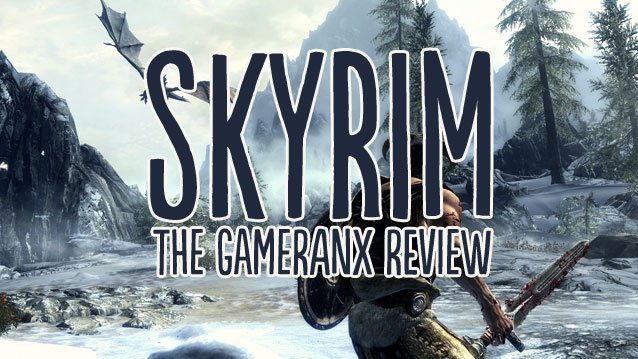

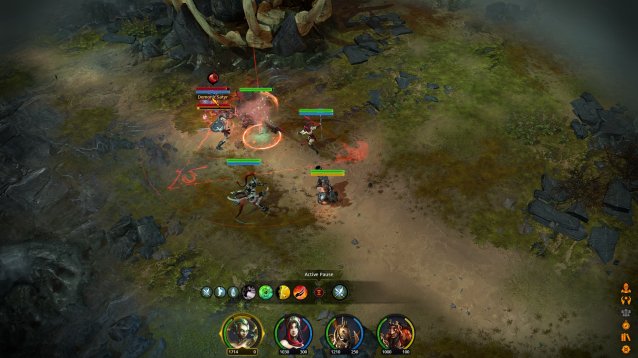

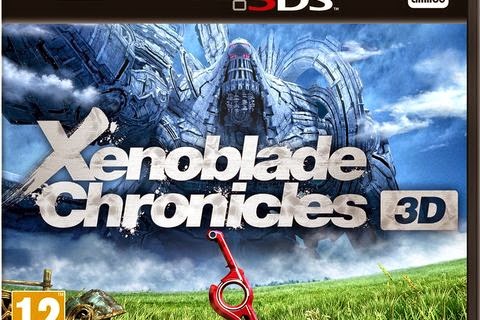 Xenoblade Chronicles 3D (3DS) Hands on review
Xenoblade Chronicles 3D (3DS) Hands on review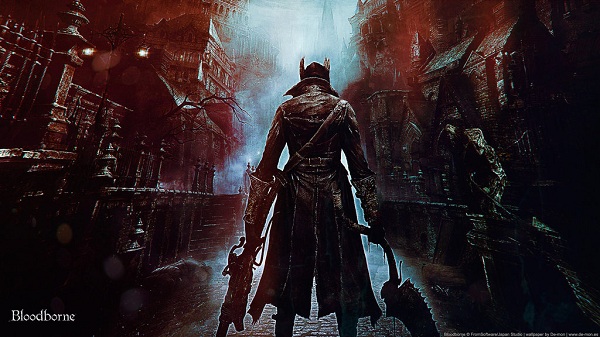 How to Beat Bloodborne PS4 Rom, the Vacuous Spider in a Completely Safe way
How to Beat Bloodborne PS4 Rom, the Vacuous Spider in a Completely Safe way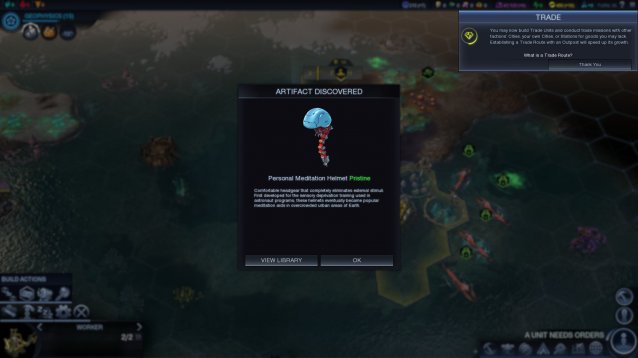 Civilization: Beyond Earth Rising Tide Aquatic Cities Guide
Civilization: Beyond Earth Rising Tide Aquatic Cities Guide The Wolf Among Us: Episode 4 Walkthrough
The Wolf Among Us: Episode 4 Walkthrough Ariana Grande Falls during Toronto Concert
Ariana Grande Falls during Toronto Concert